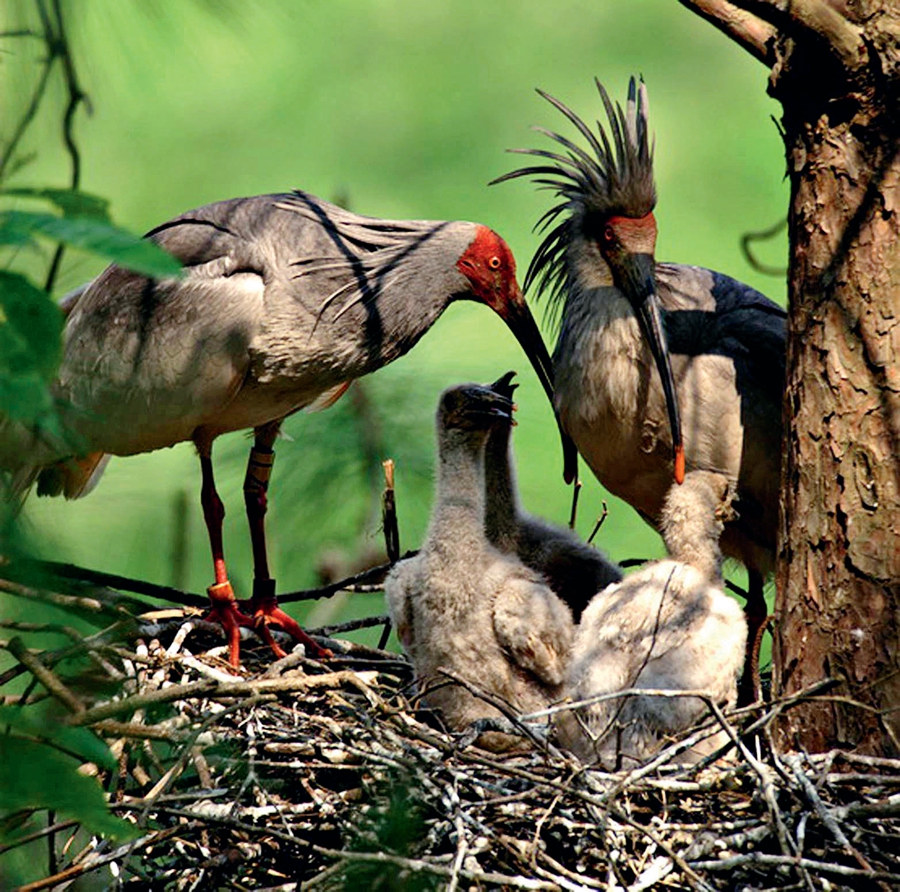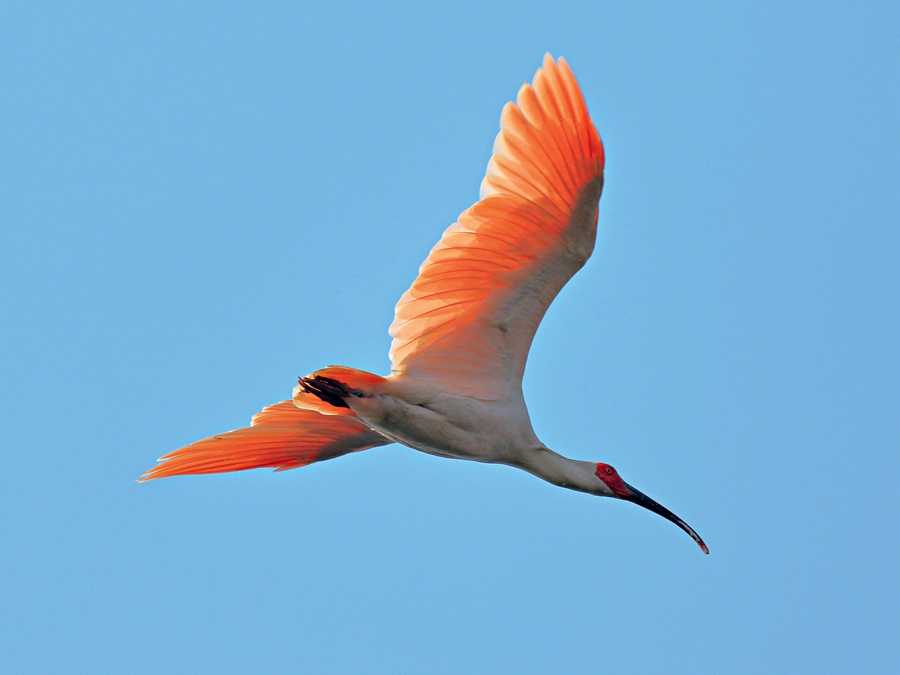An Endangered Species Rescued from the Brink of Extinction
China Today by Jiang Fumei,April 20, 2018 Adjust font size:
The crested ibis, known as red ibis in ancient times, is a rare bird exclusive to East Asia, enjoying China’s highest level of protection. It is very popular among people and praised as the “Gem of the Orient” for its crimson plumes and elegant posture. In the eyes of Chinese people, it is a “lucky bird” and a symbol of auspiciousness. Now China is the only country in the world with wild crested ibises.
The crested ibis has a long beak, a phoenix crest, and red face. The female and male look the same in color and shape. Its cheek is bare, showing red skin, making it distinct from other birds. It has a pinkish-orange iris, dark and down-curved beak. A dense crest of white plumes covers the nape. The legs are not long, and the lower part of the shins shows vermilion skin. Except for the lower part under the wings and part of the tail which are vermilion, it is covered in white plumage and looks beautiful and elegant.

The crested ibises are picky about living conditions. They need not only a quiet environment with relatively few enemies but also tall trees for perching as well as paddy fields and marshes for food. They perch on trees at night and fly to rice paddies, muddy ground, and clean streams for food in the daytime. When searching for food, they often probe into the soil and water with their long and curved beaks. While resting, they put their long beaks into the plumes on the back, the swaying crest in the breeze gives them a very natural and unrestrained look. When flying, they stretch their heads and legs and clap their wings slowly but forcefully. Their light and slow steps add to their elegance. Their chirping sounds like the cawing of the crow, they only sing occasionally when taking flight.
Every year during breeding season from March to May, the crested ibis will make a simple nest with twigs and grass on thick branches of tall chestnut, poplar or pine trees. The nest is as flat as a plate with a concave middle part. A female normally lays two to four light-green eggs. After about 30 days, the newborns will come out. After two months, the fledglings will develop grey and full plumes. It takes three years for a nestling to mature and produce offspring.
According to historical records, the crested ibis used to be widespread in China, Korean Peninsula, Japan, and southeast Siberia. China has the widest distribution with the Xingkai Lake in Heilongjiang River Valley to the north, Fujian and Taiwan to the east, Tianshui of Gansu Province to the west, and Hainan to the south.
China also has the earliest record of crested ibises in history. Back to over 2,100 years ago, crested ibis was written into The Historical Records and Folk Songs in the Han Dynasty, in which crested ibis was compared to a man who dares to present admonishment to the emperor. Therefore, a big drum on which a red ibis is painted usually stands in China’s ancient court. The officials must beat the drum before they present admonishment to the emperor.
The crested ibis was widely referred to in poetry during the Tang Dynasty (618-907), this image is often associated with the imperial court and wealth. In China, the color red represents rich and honor. The elegance and nobleness of crested ibis fits perfectly with royalty. In ancient Japan where Chinese culture had great influence, the crested ibis is regarded as a “sacred bird” and even the national bird. Its image also appears widely in the imperial palace and kimono.
Prior to the beginning of the 20th century, the water fowl was still seen in many places. According to historical records, in December 1911, thousands of crested ibises flocked in Gimje, west bank of the Korean Peninsula, resembling endless rosy clouds. In Aomori in Japan, farmers regarded it as a pernicious bird as too many crested ibises spoil the paddy fields. There were countless crested ibises in China and the Siberian wetland. Till the 1930s, traces of crested birds could be found in at least 14 provinces in China.

